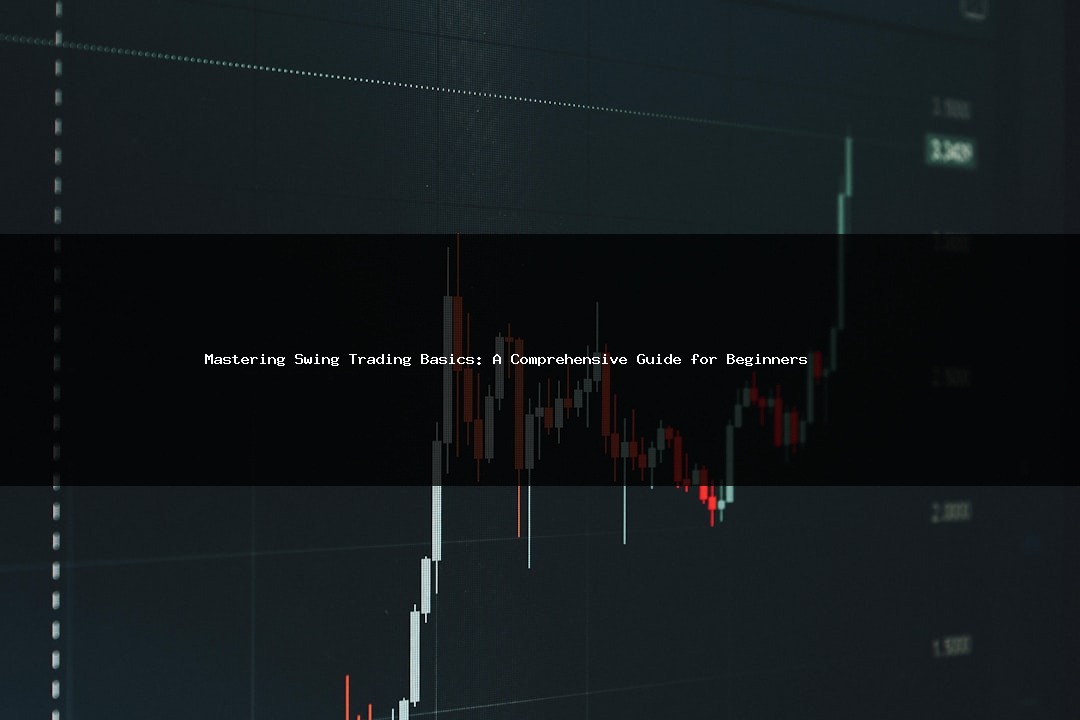Mastering swing trading can be a rewarding endeavor for both novice and experienced traders. It offers opportunities for profit by taking advantage of price fluctuations in stocks, currencies, and other financial instruments over short-to-medium time frames. In this comprehensive guide, we will explore the fundamentals of swing trading, its key components, benefits, practical applications, and address some frequently asked questions to help you embark on your trading journey.
Understanding Swing Trading
Swing trading is a trading style that aims to capture price movements or “swings” in the market over a period of days to weeks. Unlike day trading, where positions are opened and closed within a single trading day, swing traders hold onto their positions for a longer duration, allowing for more substantial price movements.
What is Swing Trading?
In essence, swing trading involves analyzing price trends and patterns in order to make informed trading decisions. Swing traders typically enter a trade after a significant price movement has occurred, anticipating that the price will continue in that direction for a short period. This strategy requires a good understanding of market trends, technical analysis, and risk management.
Time Frames in Swing Trading
Trading time frames play a crucial role in swing trading. Commonly, swing traders use daily and weekly charts to identify potential trade opportunities. Here’s a breakdown of typical time frames:
- Daily Charts: Used for identifying trends and potential entry or exit points.
- Weekly Charts: Helpful for viewing broader trends and setting longer-term targets.
- Hourly Charts: Can be used for timing entries and exits more precisely.
Key Components of Swing Trading
To successfully engage in swing trading, it is essential to understand its key components. These elements include technical analysis, risk management, and trading strategies.
Technical Analysis
Technical analysis is the foundation of swing trading. It involves studying price charts and using various indicators to forecast future price movements. Here are some critical components of technical analysis:
- Price Charts: The visual representations of price movements over time.
- Indicators: Tools such as moving averages, RSI (Relative Strength Index), and MACD (Moving Average Convergence Divergence) that help identify trends and potential reversals.
- Support and Resistance Levels: Price points at which stocks tend to reverse direction. Understanding these levels can help traders set entry and exit points.
Risk Management
Effective risk management is crucial in swing trading to protect your capital and maximize returns. Here are some strategies for managing risk:
- Position Sizing: Determine how much of your capital you are willing to risk on each trade.
- Stop-Loss Orders: Implement stop-loss orders to automatically exit a trade if the price moves against you, limiting potential losses.
- Diversification: Avoid putting all your capital into one trade or asset to mitigate risk.
Trading Strategies
There are several effective swing trading strategies that traders can implement. Here are a few popular ones:
- Breakout Trading: This strategy involves entering a trade when the price breaks above a resistance level or below a support level.
- Reversal Trading: Traders look for signs that a trend is reversing, often using candlestick patterns or other indicators.
- Momentum Trading: This strategy focuses on stocks that are moving significantly in one direction, aiming to capture the momentum.
Benefits and Importance
There are numerous advantages to adopting swing trading as a strategy, particularly for beginners. Understanding these benefits can help you appreciate why swing trading is a valuable approach in the financial markets.
Flexibility and Time Commitment
One of the most appealing aspects of swing trading is its flexibility. Unlike day trading, which requires constant market monitoring, swing trading allows traders to analyze and execute trades with less frequent attention. This makes it suitable for individuals who may have other commitments, such as a full-time job.
Potential for High Returns
With its focus on capturing significant price movements, swing trading can yield substantial profits, especially in volatile markets. Traders can leverage their positions, increasing potential returns while managing risk through effective strategies.
Learning Opportunity
For beginners, swing trading provides an excellent learning opportunity. It encourages traders to develop analytical skills, understand market dynamics, and implement various strategies. This learning curve can benefit traders in their overall trading careers, whether they choose to stick with swing trading or explore other styles.
Practical Applications
Understanding the practical applications of swing trading can help you translate theory into action. Here are some real-world examples and tips for applying swing trading strategies effectively.
Example of a Swing Trade
Let’s consider a hypothetical example of a swing trade:
Imagine that you are analyzing the stock of Company XYZ. You notice that the stock has been consistently bouncing off a support level of $50, while also facing resistance at $60. You decide to enter a swing trade when the stock breaks above $60, setting a target of $70 based on previous price movements.
To manage risk, you place a stop-loss order at $58, limiting potential losses if the trade does not go as planned. If the stock reaches your target, you could realize a profit of $10 per share.
Utilizing Technical Indicators
As a swing trader, utilizing technical indicators can enhance your decision-making process. Here are some indicators commonly used by swing traders:
- Moving Averages: Help identify the direction of the trend.
- Relative Strength Index (RSI): Indicates overbought or oversold conditions.
- Bollinger Bands: Provide insight into price volatility and potential reversal points.
Setting Realistic Goals
Setting realistic trading goals is crucial for success in swing trading. Establishing clear objectives regarding profit targets and risk tolerance can help maintain discipline and prevent emotional decision-making. Consider the following when setting your goals:
- Define your profit target for each trade.
- Establish a maximum loss limit you are comfortable with.
- Assess how many trades you plan to execute within a certain period.
Frequently Asked Questions
What is the ideal time frame for swing trading?
The ideal time frame for swing trading typically ranges from a few days to a few weeks. Traders often use daily and weekly charts to analyze price movements and make informed decisions. This time frame allows traders to capture significant price swings without the need for constant monitoring.
Do I need a large capital to start swing trading?
No, you do not need a large capital to start swing trading. Many brokers offer accounts with low minimum deposits, allowing you to start trading with a modest amount. However, it’s essential to practice proper risk management, regardless of the capital you have.
How do I choose stocks for swing trading?
Choosing stocks for swing trading involves analyzing liquidity, volatility, and overall market conditions. Look for stocks that have a consistent trading volume and exhibit strong price movements. Additionally, consider using technical indicators to identify potential entry and exit points.
Can swing trading be automated?
Yes, swing trading can be automated using trading algorithms and software. Many traders use automated trading systems to execute trades based on predefined criteria, reducing the need for manual intervention. However, it’s essential to test and refine any automated strategy thoroughly.
What are some common mistakes to avoid in swing trading?
Some common mistakes in swing trading include:
- Ignoring risk management: Failing to set stop-loss orders can lead to substantial losses.
- Overtrading: Taking too many positions can dilute your focus and increase risk.
- Lack of a trading plan: Trading without a clear plan can result in emotional decisions and inconsistent results.
How do I determine when to exit a swing trade?
Exiting a swing trade is often determined by your predefined profit targets and stop-loss levels. Additionally, consider using trailing stops to lock in profits as the price moves in your favor. Regularly assess market conditions and technical indicators to adjust your exit strategy as needed.
Conclusion
Mastering swing trading basics involves understanding its principles, key components, and practical applications. By focusing on technical analysis, effective risk management, and developing a disciplined trading strategy, you can increase your chances of success in the market. Remember to continuously educate yourself, practice, and refine your approach as you embark on your trading journey. Swing trading offers a flexible and potentially lucrative way to engage with the financial markets, making it a valuable skill for any aspiring trader.





